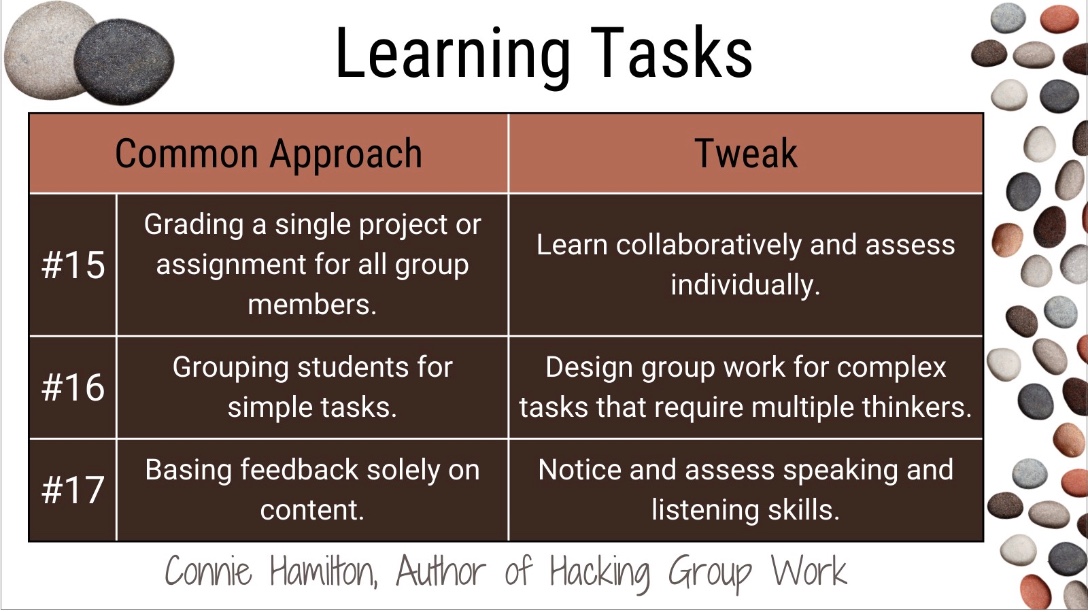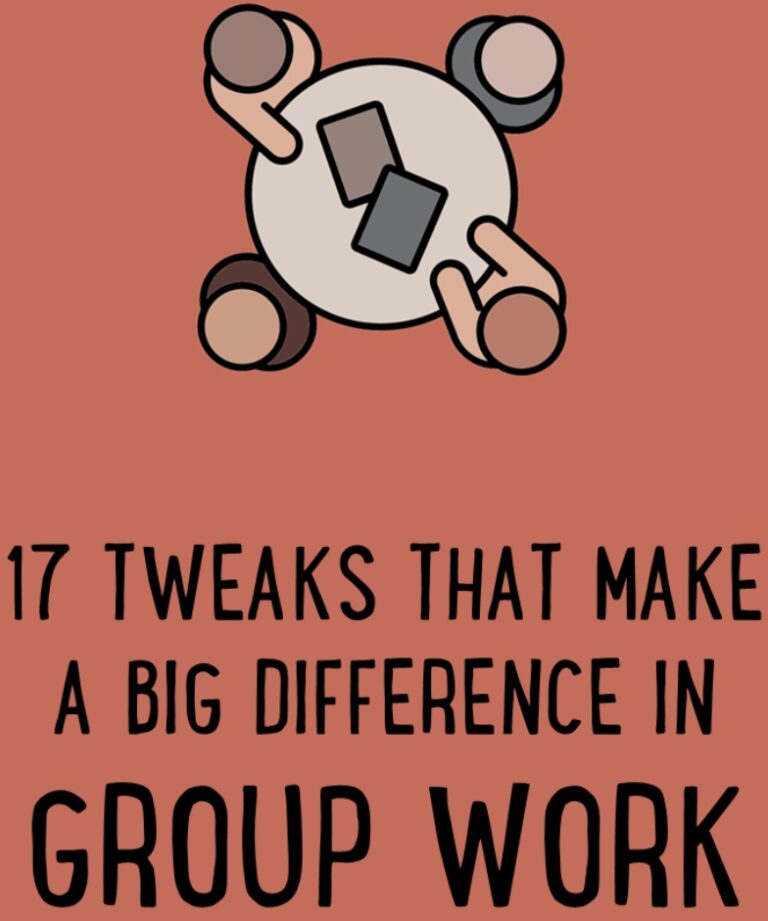Small Changes That Make a Big Difference in Group Work
Introduction
It’s pretty well known in educational circles that cooperative learning is supported by research, but so many teachers still struggle with it, so when things don’t work well, they give it up. In my observations of thousands of teachers, I’ve noticed that sometimes the smallest tweak in instructional approaches reaps the biggest impact, and group work is no exception.
I’ve gathered some of the most common efforts among teachers everywhere that aren’t met with the same amount of effort and success from their students, and for each one, I offer a small tweak that can make big improvements. Sometimes the tweak is a shift in semantics, other times it might be a slight change in how information is presented, and in some cases, it focuses on how teachers react when students lean on them to “help” instead of doing the heavy lifting themselves.
The instructional methods are sorted into six categories: grouping structures, giving directions, assigning roles, support during student collaboration, the teacher’s primary role, and the learning tasks. In each of these six categories, look for examples that describe how you approach or respond to group work, then consider these suggestions for elevating the effectiveness of student collaboration while limiting or reducing the energy you contribute.
Grouping Structures
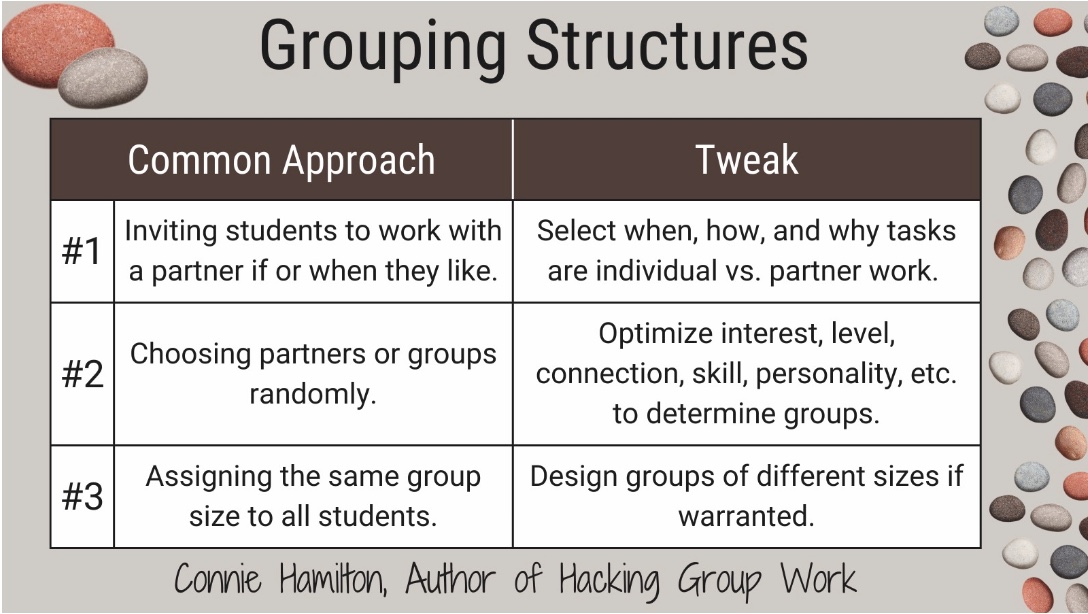
Giving Directions
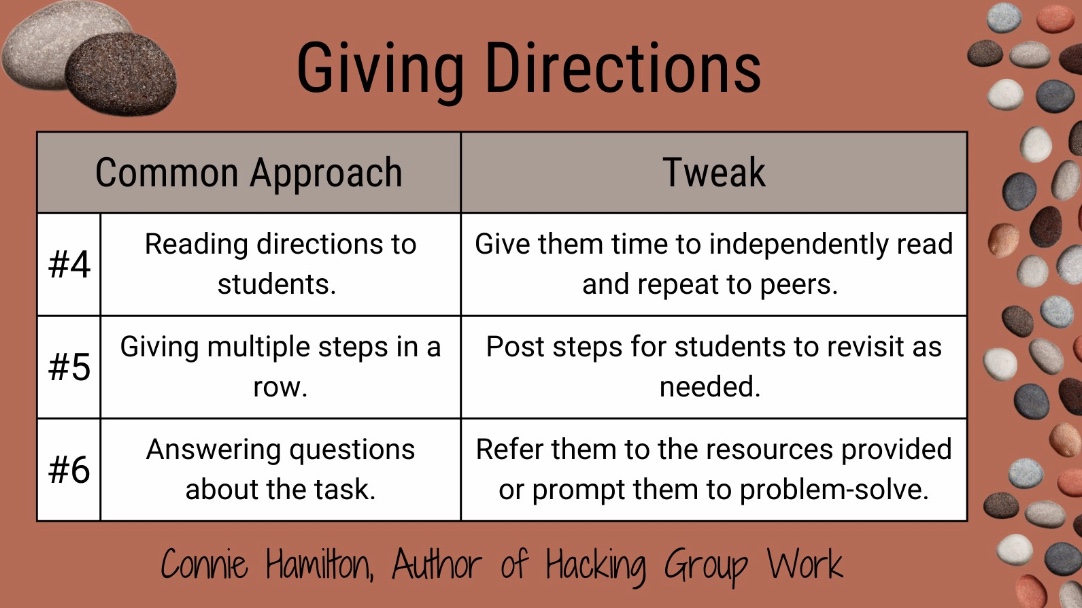
Assigning Roles
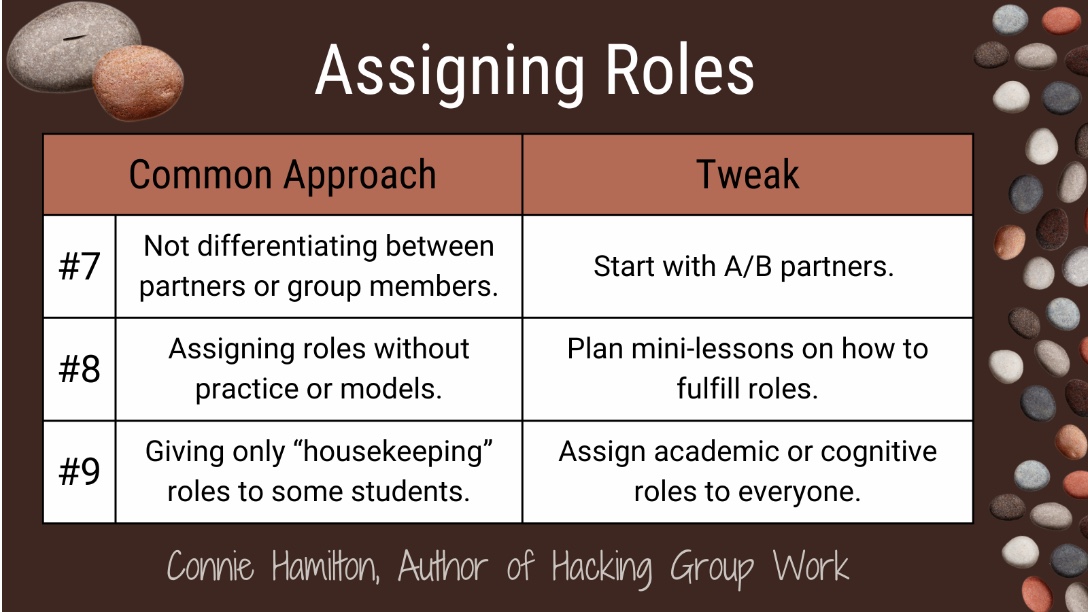
Providing Support
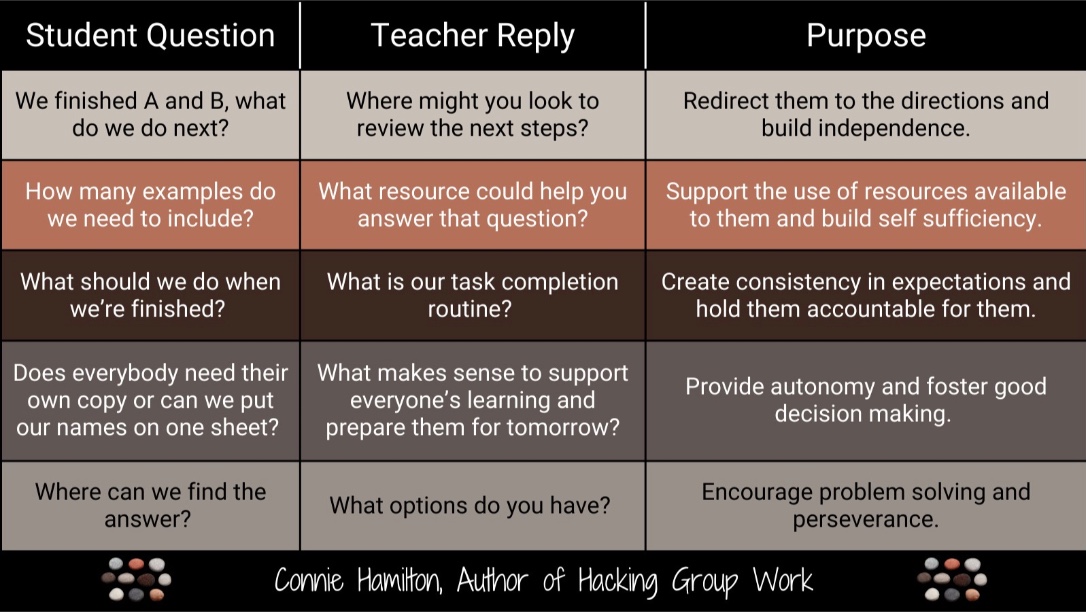
Teacher's Role
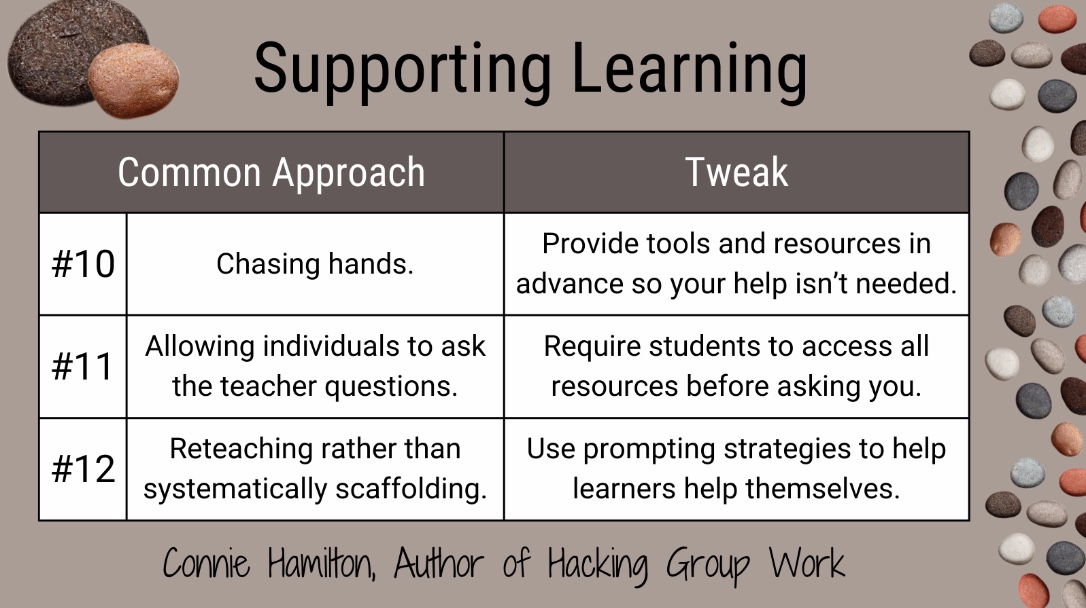
Learning Task
